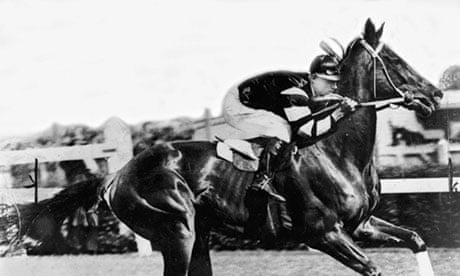A piece of Phar Lap's tooth is being sent to Australia from a museum in New Zealand so scientists can analyse his DNA and compare it to the likes of other champions like Black Caviar.
Phar Lap's bones are housed in New Zealand, but a 60mg piece of tooth from the champion thoroughbred of the late 1920s, early 1930s has been sent over for DNA sequencing.
"We're creating a DNA sequence which we hope can be used for different studies comparing the DNA from different breeds," Natasha Hamilton from the University of Sydney's veterinary science faculty told AAP on Wednesday.
"We'd also like to compare Phar Lap's sequence with other elite performers from the modern era."
Dr Hamilton said the DNA sequencing would also help shed light on the genetic diversity of thoroughbreds around the world, past and present.
"What is it that, genetically, makes a thoroughbred different to other breeds?"
It will also highlight how modern thoroughbreds have changed or how they have lasted the test of time, she said. "Horses are athletes, so they're great models for studying exercise physiology."
Before sequencing can begin, scientists at the Australian Centre for Ancient DNA (ACAD) in Adelaide will extract the DNA by boiling the tooth down in a corrosive solution.
Scientists hope this process will provide enough high-quality DNA for a complete genome sequence of Phar Lap.
This type of analysis on racehorses has never been done in the southern hemisphere, Dr Hamilton said.
In Europe it has been performed on two high-profile British thoroughbred racehorses – Eclipse, who raced in the late 1760s, and 1950s champion Hyperion.
The process used to obtain Phar Lap's DNA rules out its use for cloning, which requires a large amount of DNA.
"Sorry punters, there is no hope of Phar Lap II running around a few years from now," Dr Hamilton said.
